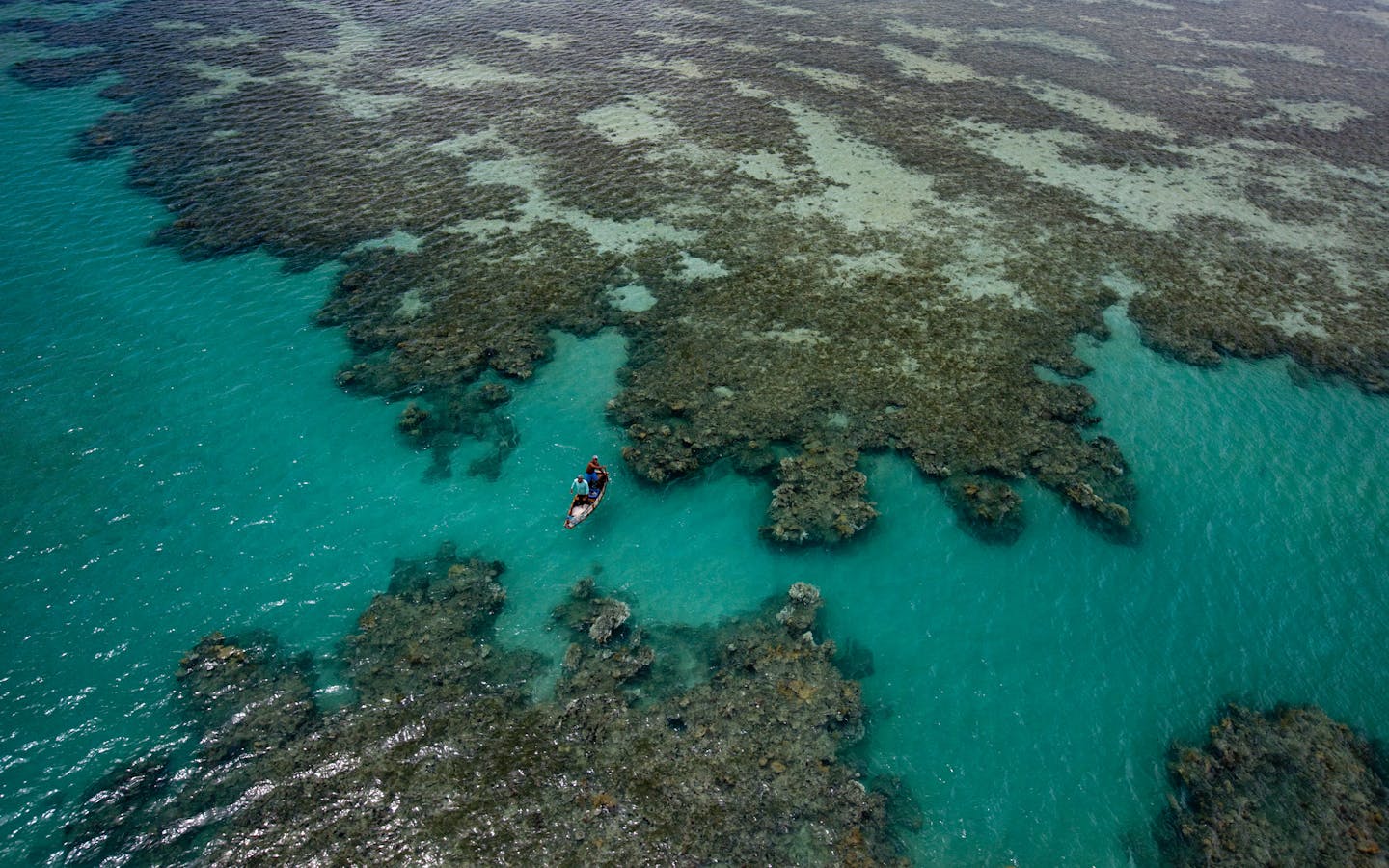Brazil’s central coast, home to the south Atlantic Ocean’s largest and most diverse coral reef system, attracts tourists from around the world — but overfishing and development put much of the area at risk.

A group of five small islands, the Abrolhos Seascape spans more than 95,000 square kilometers (nearly 37,000 square miles). From mushroom-shaped coral formations found nowhere else on Earth and seabirds like the brown booby to mangroves and humpback whales, the region supports a variety of plant and animal life.
But many of the seascape’s species — like marine turtles — are endangered, and steps to ensure their protection need to be taken, not only for their sake, but for the thousands of people whose income relies on sustainable fishing and tourism.
Why is the Abrolhos Seascape important?
Jobs and prosperity
The seascape’s environment plays an important role in job creation and income for local communities. An estimated 20,000 fishermen earn their main source of income from small-scale, sustainable fishing using traditional practices. Through activities such as diving, snorkeling, swimming and whale watching, tourists increase income opportunities and contribute significantly to the local economy.
Joy and inspiration
The Abrolhos region harbors the highest known marine biodiversity in the entire south Atlantic, including the largest population of humpback whales on the Brazilian coast. The Seascape’s reef formations are the largest in Brazil, displaying unique structures and attracting tourists from around the world.
What are the issues?
With large populations of species of high commercial value, such as squared grouper and yellowtail snapper, a growing number of larger and industrial fishing boats have moved to the Abrolhos Seascape, increasing pressure on the species and competing with traditional fishermen and their primary income source.
Economic activities, such as oil and gas exploitation, shrimp farming and intensifying coastal development threaten the Abrolhos Seascape’s mangrove forests, coral reefs and other delicate ecosystems.
What are we doing?
Our role
Since 1996, Conservation International has been working with partners — including universities, nonprofits, communities and government agencies — to conserve the Abrolhos Seascape’s unique ecosystems.
Our plan
Improving lives and protecting nature
Conservation International is working to expand the Abrolhos network of marine protected areas, make local fisheries more sustainable and improve the quality of life of coastal communities. We are also developing and implementing an ecosystem-based adaptation strategy to protect coastal and marine habitats against the effects of global climate change.
By the numbers
3,000 square kilometers
Conservation International has facilitated the creation of three extractive reserves, areas owned by the Brazilian government where fishing is limited to local communities that use sustainable harvesting methods — ultimately protecting around 3,000 square kilometers (1,200 square miles).




